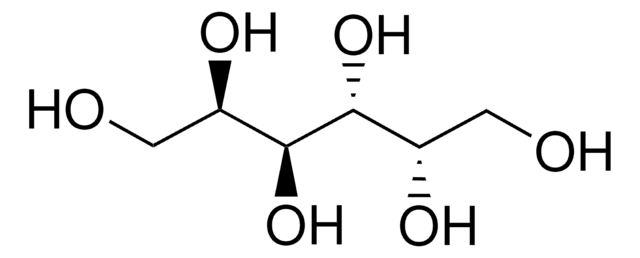D2438
Dimethyl sulfoxide
sterile-filtered, BioPerformance Certified, meets EP, USP testing specifications, suitable for hybridoma
Synonym(s):
DMSO
About This Item
cryopreservation: suitable
Recommended Products
grade
BioPerformance Certified
Quality Level
Agency
USP XXIV
meets EP testing specifications
meets USP testing specifications
vapor density
2.7 (vs air)
vapor pressure
0.42 mmHg ( 20 °C)
sterility
sterile-filtered
form
liquid
autoignition temp.
573 °F
expl. lim.
42 %, 63 °F
technique(s)
cell culture | hybridoma: suitable
cryopreservation: suitable
impurities
≤0.1% water
color
colorless
refractive index
n20/D 1.479 (lit.)
bp
189 °C (lit.)
mp
16-19 °C (lit.)
solubility
H2O: miscible (completely)
density
1.10 g/mL (lit.)
SMILES string
CS(C)=O
InChI
1S/C2H6OS/c1-4(2)3/h1-2H3
InChI key
IAZDPXIOMUYVGZ-UHFFFAOYSA-N
Looking for similar products? Visit Product Comparison Guide
General description
Application
Features and Benefits
Caution
Storage Class Code
10 - Combustible liquids
WGK
WGK 1
Flash Point(F)
188.6 °F - closed cup
Flash Point(C)
87 °C - closed cup
Personal Protective Equipment
Choose from one of the most recent versions:
Already Own This Product?
Find documentation for the products that you have recently purchased in the Document Library.
Customers Also Viewed
Our team of scientists has experience in all areas of research including Life Science, Material Science, Chemical Synthesis, Chromatography, Analytical and many others.
Contact Technical Service





